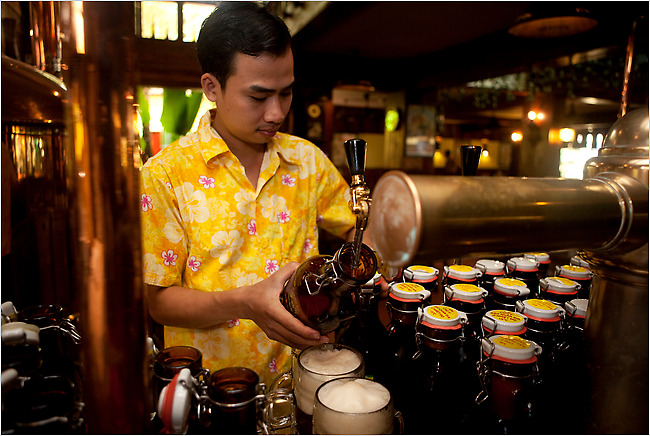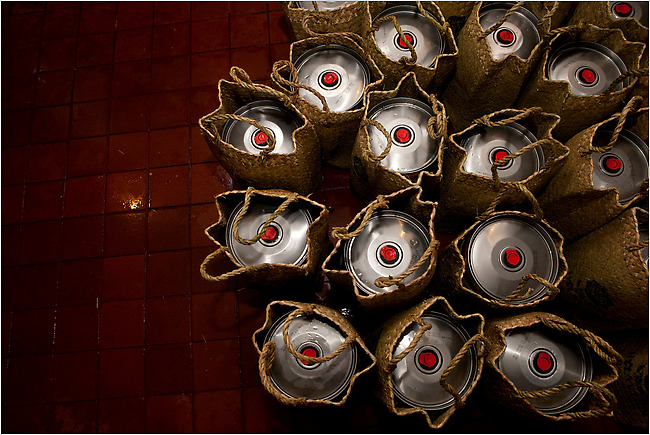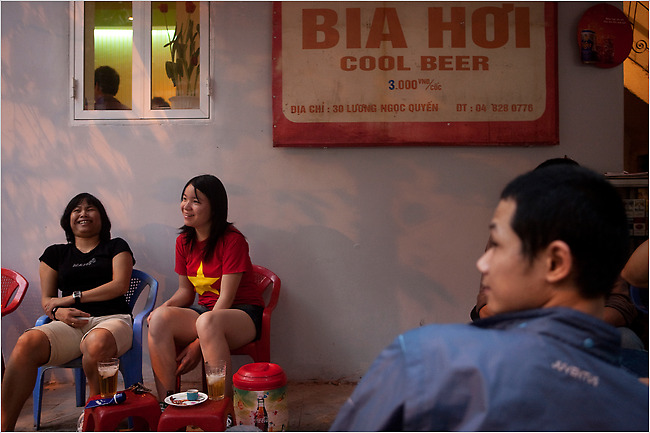The humid air buzzed with conversations in melodiously tonal Vietnamese. This, too, surprised me. Considering that Hoa Vien’s founder is an honorary consul of the Czech Republic (that is, a noncareer diplomat), I had envisioned throngs of expatriates knocking their glasses together. But the crowd was made up of young Vietnamese men in slacks and button-down shirts — lanyards with key cards still dangling around their necks — and couples chatting under large, shady trees. All part of Vietnam’s growing generation of hip, young professionals.At the beginning of a beer odyssey through this long, slender country, I savored the unexpectedness of it all as I sipped two draft brews made on the premises, carrying Hoa Vien’s Hoavener label. The crisp, freshly poured bia vang (yellow beer), what we would call a golden lager, had a bitter hops flavor somewhere between a typical Czech pilsner and a Munich-style lager. The bia den (black beer), a dark lager, was more intensely bitter, and had just enough bite to balance a beautiful malt-caramel flavor. Both were wonderful.For the first-time visitor to Vietnam, the variety of local and regional beers can be surprising. It seems each city has a beer named after it (Bia Can Tho, Bia Thai Binh, Bia Saigon, Bia Hanoi, Bia Hue, and so on), and the best of the bunch depends on whom you ask and where you’re asking. But in recent decades, Vietnamese beer culture has morphed, adopting traditional European styles as well as embracing a uniquely ephemeral home-grown brew called bia hoi. The latter is so popular that to many of the roughly four million people who visit Vietnam each year, drinking bia hoi on the streets of Hanoi is as emblematic of a trip to Southeast Asia as ordering pad Thai in Bangkok.Ho Chi Minh City is home to a handful of European-style microbreweries, most of which are centrally located in District 1 and some of which claim to brew their beer according to the Bavarian purity law known as the Reinheitsgebot. This trend took off in 2001 when Hoa Vien, which had previously been importing Pilsner Urquell, built a Euro-style brewery inside the restaurant with the help of experts from the Czech Republic. Other breweries followed, trying to tap into a domestic beer culture that stretches back at least to the 1890s (that’s when the Habeco brewery, now state run, was founded by French colonialists), was revitalized during the Vietnam War in the 1960s, and currently produces more than 2 billion liters of beer a year. Filling beer bottles at Hoa Vien in Ho Chi Minh City.
Filling beer bottles at Hoa Vien in Ho Chi Minh City.
 Gallons for sale at Hoa Vien.
Gallons for sale at Hoa Vien.

Bia hoi corner in Hanoi, known for the brew.
This article has been revised to reflect the following correction:
Correction: February 28, 2010A picture caption on Feb. 21 with an article about tasting local and regional beers in Vietnam misidentified the type of beer shown being delivered in Hanoi in the top photograph. It is Bia Ha Noi, as labeled on the boxes — not bia hoi, Hanoi's local draft beer.
Source:
http://travel.nytimes.com/2010/02/21/travel/21explorer.html?pagewanted=2